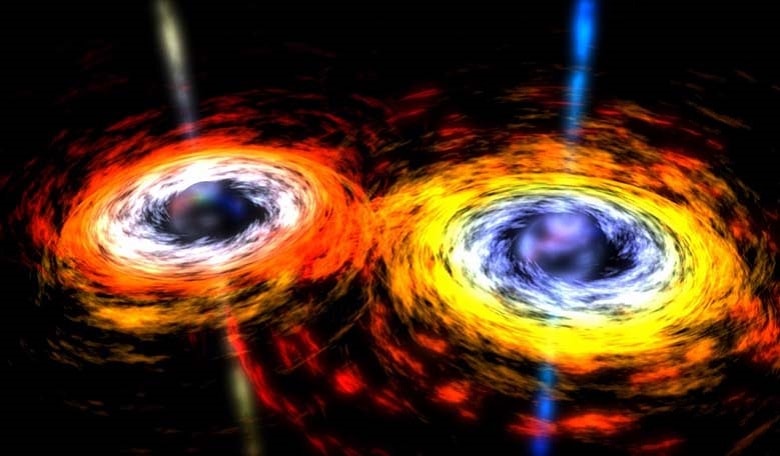The recent ground-breaking detection of gravitational waves by the Laser Interferometer Gravitational Wave Observatory (LIGO) provided confirmation of not only the elusive phenomena predicted by Albert Einstein's general theory of relativity, but also simultaneously yielded the first observation of a binary black hole (BH) merger, thus marking the beginning of a new era in gravitational wave astronomy.
"LIGO has just proved that binary black holes merge frequently throughout the universe, much more than many people expected," said Richard O'Shaughnessy, assistant professor in the School of Mathematical Sciences and a co-author in a paper recently submitted to Physical Review Letters. "But the discovery of a black hole merger is only the tip of the iceberg."
Overshadowed by the gravitational wave detection (of GW 150914) were follow-up searches in visible light (optical) up to the gamma-ray energy spectrum for electromagnetic counterparts to the black-hole merger. Indeed, just 0.4s after GW 150914 was detected, observations with Fermi’s Gamma-ray Burst Monitor (GBM) revealed the presence of a weak short-duration gamma-ray burst (GRB) event with a false alarm probability of 0.0022. Its localisation was reported as ill-constrained but consistent with the direction of GW150914 and does not appear connected with other previously known astrophysical, solar, terrestrial, or magnetospheric activity. A number of possibilities to account for this GRB have already been undertaken, with phenomena such as the afterglow emission of relativistic jets or strong disk winds in super-Eddington accretion disks have been postulated as the cause of this event.
In order to shed more light on the turbulent environment of a black-hole merger, scientists have considered the implications of a wind, powered by an active mini-disk – a small disk that may aid in the coalescence of two black holes – to assess how these winds might manifest in the vicinity of a merged black-hole.
The team led by Kohta Murase calculated the affects of a black-hole merger with masses in the range of ~10 - 100 solar masses. The team found that the thermal emission generated in the merger could be seen as a fast optical transient with the duration of hours. The team also showed that an ultrafast flow originating from a mini-disk wind develops into a blast wave. The resulting coasting outflow forms external shocks due to interaction with the interstellar medium, producing synchrotron emission – a type of non-thermal radiation generated by charged particles spiralling around magnetic field lines at close to the speed of light. An advantage of the synchrotron radio signals is that the emission is long-lasting, hence follow-up observations can be made on the scale of months-to-years after the detection of an initial gravitational wave signal.
Although the team focused on the emission associated with a mini-disk wind, a possible jet component was also considered as a physical origin for the tentative short GRB that accompanied GW 150914. The team state that while study does not attempt to explain the details of the resulting high-energy GRB emission, a jet powered by the Blandford-Znajek (BZ) process could potentially give a viable explanation for the observed luminosity of the gamma-ray burst. The BZ process is a mechanism for the extraction of energy from a rotating black hole and is one of the best explanations for the way quasars are powered.
With scientific runs at increasing levels of sensitivity now being planned for the U.S.-based LIGO detectors and the Italian counterpart, Advanced Virgo, researchers are hoping to spot signs not just of binary mergers, but for a range of signals from unexplained bursts to a background 'hum' from many weak signals from the distant universe, or perhaps even the big bang. Studies such as these could thus help constrain the type of emission produced from various high-energy phenomena.
More on this research can be found at wwww.arxiv.org











